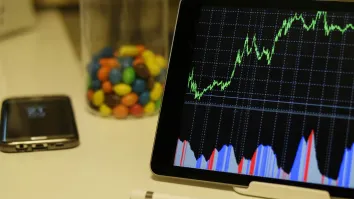
Domestic vs international banks: Who’s winning in the Philippines?
There is concern that the entry of more foreign banks will threaten local banks.
But optimists view their arrival as a long-term boon since it could lead to adoption of cutting-edge banking technology.
When the Bangko Sentral ng Pilipinas (BSP) liberalised the provision of banking services in the Philippines, the central bank triggered a wave of industry consolidation and foreign investment that, at first glance, seems like it could do no wrong. But even as local players gather strength and foreign banks make their splashy arrivals, there remains a struggle to bring basic banking services to millions of Filipinos.
Philippine banks have been engaging in numerous mergers and acquisitions, and consolidation will play a major role in shaping the Philippine banking sector in the coming years, according to analysts, which leads to questions on whether it can also alleviate the country’s poor financial inclusion.
“Banks that were active in mergers, acquisition and consolidation were universal banks, commercial banks and rural banks. This is indicative of local banks scaling up and competing against larger foreign banks that will gain entry into the banking system due to the liberalised entry requirements,” says Nestor A. Espenilla, Jr., deputy governor of the Bangko Sentral ng Pilipinas.
The number of banking offices and foreign bank branches are growing. As of September 2015, there were 635 operating banks with a network of 9,980 branches and other offices, up from 9,555 the previous year.
Espenilla notes that key market players in the Philippines continue to be domestic banks with 615 head offices composed of 17 private domestic banks, 3 government banks, 66 thrift banks, and 529 rural and cooperative banks. But there are now 20 foreign bank branches and subsidiaries operating in the Philippines and accounting for 8.2% of total system-wide assets, including Sumitomo Mitsui Banking Corporation, Cathay United Bank Co. Ltd., Shinhan Bank Co. Ltd. and Industrial Bank of Korea, which all started operations last year.
There will be more mergers and acquisitions specifically among small rural lenders such as rural banks and cooperative rural banks in the face of ongoing integration in the Association of Southeast Asian Nations, the powerful 10-nation economic regional bloc of which the Philippines is a member nation, says Gilda E. Pico, president and CEO at Landbank.
Pico points out that as of end 2015, there were 543 closures registered in the rural banking sector, and that the total number of banks decreased by 2.5% to 632 head offices from 648 in 2014.
“This is a significant trend that will reduce the banking industry’s structural weaknesses, strengthen balance sheets, improve operational efficiencies and encourage innovation while being conscious of risk exposures,” says Pico.
The ASEAN regional integration will present two immense opportunities for Philippine banks, concurs Benel D. Lagua, executive vice president and chief development officer at Development Bank of the Philippines.
First, Philippine banks would gain greater access to the ASEAN financial market which has an estimated population of 600 million individuals. Second, there is an opportunity to capture the high amount of savings in the ASEAN region, which boasts a relatively high savings rate of 31%, but currently a significant portion of these savings is placed outside the region.
“A more organised ASEAN financial market through the regional integration would therefore provide an opportunity for the country’s banking industry to grow,” says Lagua.
There is concern that the entry of more foreign banks will threaten local banks, but optimists view their arrival as a long-term boon since it could lead to adoption of cutting-edge banking technology and the emergence of stronger local players – a must for competing in the regional arena.
“Competition combined with the increase in the minimum capital requirement for banks could usher in a period of further consolidation of the banking industry and the creation of bigger banks that can compete with the region’s leaders, not necessarily asset for asset, but in terms of the levels of safety and soundness that come with a bank’s size,” says Espenilla.
“For Philippine banks, the technological innovations to be introduced by the new entrants could provide them with the impetus to further develop the technology, especially in the area of mobile banking where they have competitive advantage,” says Espenilla.
For Patrick Cheng, head of trust group at Chinabank, while the entry of big, well capitalised regional players will introduce new technologies and best practices to Philippine banks, domestic players should work double time to reach the millions of Filipinos which still do not have full access to banking services.
“As competition intensifies, we would likely see the domestic players push towards underbanked and underserved markets in order to seek new areas of growth,” says Cheng.
Financial inclusion
Despite the potential payoffs in the long term, many Philippine banks continue to err on the side of caution when it comes to expanding their banking services to rural and low-income areas, leaving it to microfinance institutions and rural banks with microfinance operations.
“A great challenge for the Philippine banking industry is financial inclusion,” says Pico. “While financial inclusion has been institutionalised by the BSP, bigger banks are not so keen in extending credit to the unbanked and underbanked sectors of the economy despite ample liquidity in the system.”
A large segment of the population has relatively low access to deposit services, as well as low access to loans from formal institutions, according to Gilberto Llanto, president of the think tank, Philippine Institute for Development in his working paper “Financial Inclusion, Education, and Regulation in the Philippines.”
Citing data from the 2011 Global Findex Report, the Philippines – together with the Lao People’s Democratic Republic, Cambodia, Indonesia, and Vietnam – have access to financial services that are lower than those of East Asia and the Pacific and the world.
World Bank data also showed that only 10.5% of adults in the Philippines had a loan from a formal financial institution in 2010. “Micro-entrepreneurs and small enterprises also suffer from limited access to a range of financial services despite the mandatory credit allocation imposed by law,” says Llanto.
The Magna Carta for Micro, Small, and Medium Enterprises, a law passed by the Philippine Congress mandated that from June 2008 to June 2018, banks must allocate at least 8% of their loan portfolio for micro and small enterprises, and at least 2% for medium enterprises. But Llanto laments that only the rural banks consistently complied with the required 8% from 2008 to 2014, while compliance for universal and commercial banks dipped below the required rate and declined over the period.
If there is a bright spot in efforts to improve financial inclusion, it is in the mobile space.
Already the banks are expanding their branch networks to areas outside Metro Manila, in outer cities and provincial areas, often through the aid of mobile and digital banking technology, says Alka Anbarasu, VP-senior analyst at Moody’s Investors Service.
But Lagua says Philippine banks looking to roll out mobile banking services may find their efforts blunted by painfully slow internet connections. The country currently has one of the slowest internet connections in Asia and the world. In 2015, a study of consumer internet speed by Ookla revealed the Philippines had an average speed of 3.64 megabits per second, ranking 21st out of 22 Asian countries, and 176th out of 202 countries worldwide. Lagua warned the slow internet speed may impede the timely provision of mobile banking services, blunting their intended reach and bottom line impact.
Aside from improving internet speeds, the Philippine government must help support the growth of mobile banking and ensure that new technology can be used to expand the availability of banking and financial services.
“There is merit in developing appropriate regulation and supervision of mobile banking and various types of financial innovations for fostering financial inclusion,” says Llanto.


















 Advertise
Advertise









